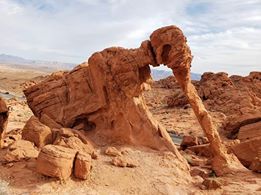A Personal Locator Beacon could be the difference between life or death, minor injury or serious complications, spending the night alone on a freezing mountain side or in a warm bed. Twenty or more years ago, you hope of being located if lost or injured could be hit or miss. It could depend on the wind carrying your cries for help toward other hikers – or away from them. Even alert whistles (discussed elsewhere) while greater then just voice yelling for help, could be hindered by dense forests or rocky terrain.
Even today’s modern cellphones are often of little or no value when in remote mountain terrain. Cell coverages are very limited in sparsely populated areas. Plus cellphones if left on have a horrible record of draining batteries especially when out of range of a tower and in the search mode. The same cellphone that might have 20 hours of battery life can drain at 40% to 60% faster in the search mode. And even the best cellphones have limited limited distance. If you are 10 miles deep in the woods of the Appalachian Trail, the likelihood of your phone communicating reliably with the tower allowing you to summon assistance is marginal. Even then, your phone may not be able to provide a good location fix to emergency responders and you may be unable to provide an exact location.
Crucial to everyday modern life is the Global Positioning System or GPS. The US based GPS system is not the only system available as numerous other countries also have similar systems which can sometimes be added to the latest receivers allowing for even greater accuracy of locations. In the late 1990/early 2000, the systems were capable of locating some objects to within 6 feet or so. Today’s multiband systems are down to under 1 foot.
Some more inexpensive system are little more then a locator beacon that sends out a programmed alert and your coordinates to guide rescue personnel to your location. On the upper end they are capable of two messaging allowing more detailed information of the needed assistance. Some have the ability to assist with mapping information in the event you are only lost and not in physical or medical danger. A few models will work in conjunction with your iPhone or Android cellphone. Prices can range from almost $100 to over $500.
It would be recommended that if you are purchasing one for yourself, you might stick with a budget model in the beginning and upgrade as your skill level and adventures take you into more and more remote locations. Not everyone in a multi-hiker party needs their own locator, but it never hurts if people get separated from each other, but two more units provide back up in case of emergencies.
The saying is an ounce of prevention beats a pound of cure. The following units average but a few ounces each and in an emergency from simply lost with a cold night eminent to a serious injury, those few ounces are worth their wright in gold.
Pictures below are provided by contributors or supporters of this website. If you are interested in sharing your pictures of Nevada, please drop us a note.

Courtesy T. Turner – Wind sculptured rock